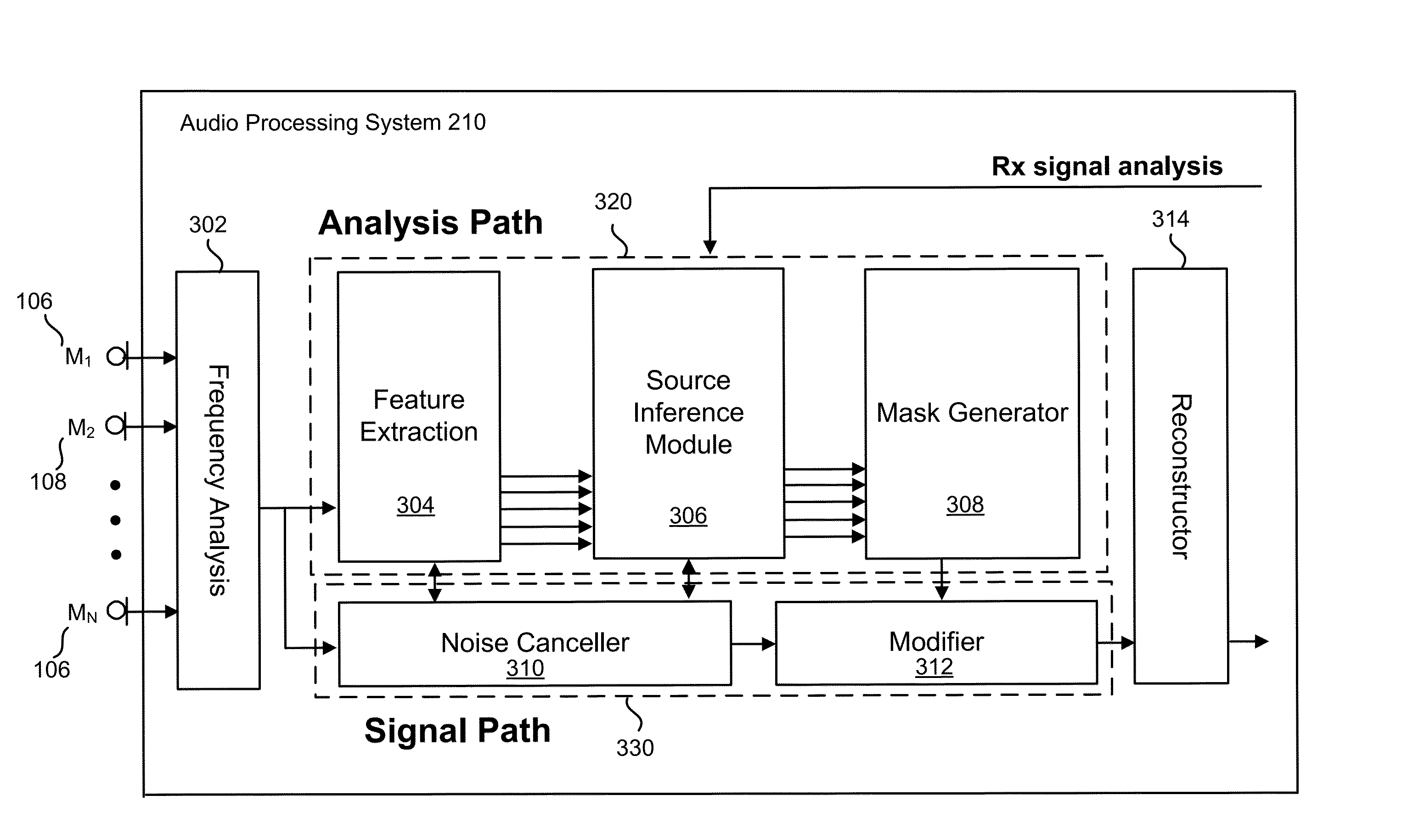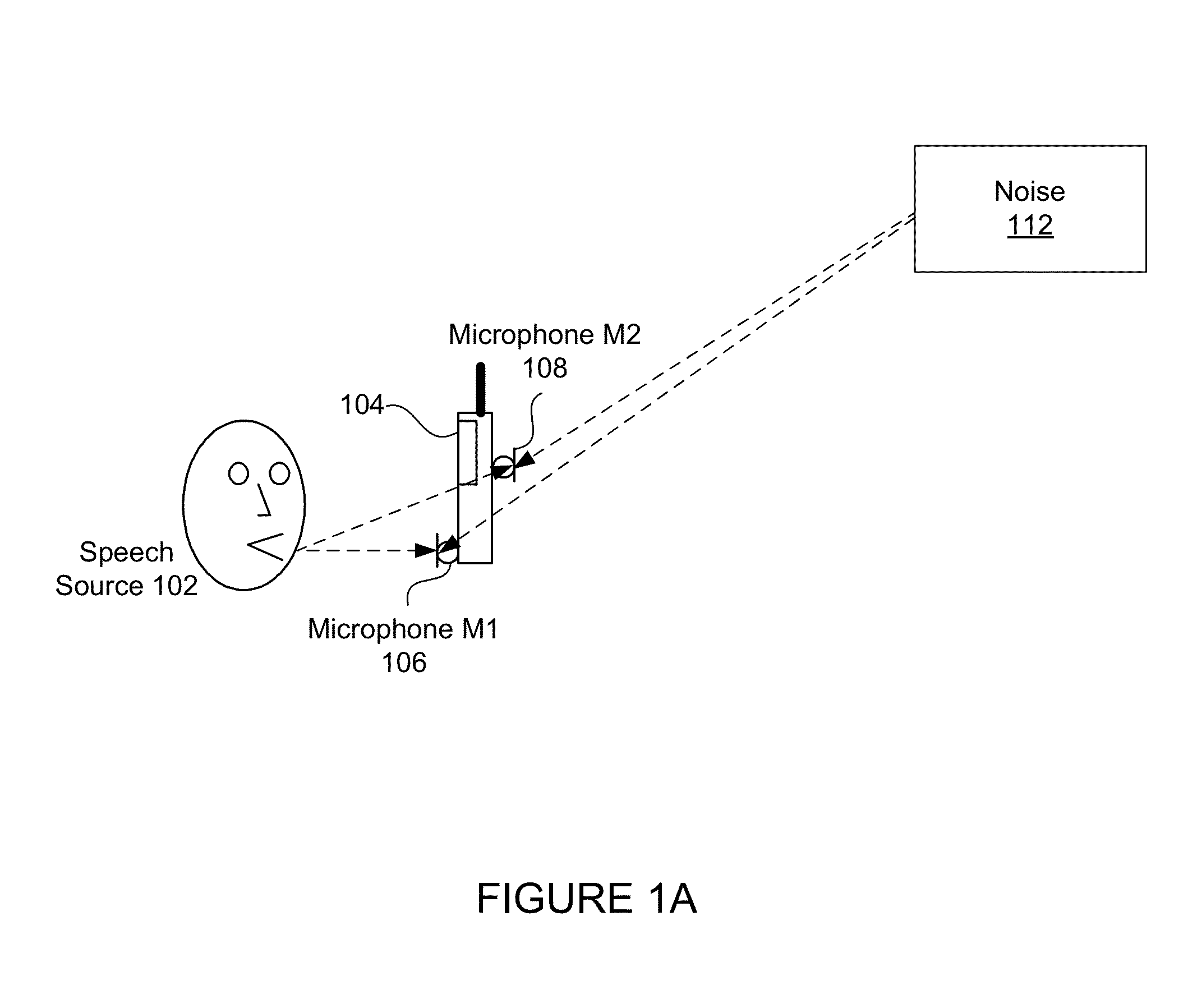Adaptive noise cancellation for multi-microphone systems
a multi-microphone system and adaptive technology, applied in the direction of transducer casings/cabinets/supports, transducers, transmission, etc., can solve the problems of speech degradation, speech degradation will become more severe, and snr alone is not a very good predictor of speech distortion, so as to reduce the energy level of a noise component in the primary acoustic signal, and suppress noise
- Summary
- Abstract
- Description
- Claims
- Application Information
AI Technical Summary
Benefits of technology
Problems solved by technology
Method used
Image
Examples
Embodiment Construction
[0019]The present technology provides for null processing noise subtraction to be performed per sub-band and time frame for acoustic signals received from multiple microphones. The acoustic signals may include a primary acoustic signal and one or more additional acoustic signals. A noise component signal may be determined for each additional acoustic signal in each sub-band of signals received by N microphones by subtracting a desired signal component within every other acoustic signal weighted by a complex-valued coefficient σ from the secondary acoustic signal. The noise component signals, each weighted by a corresponding complex-valued coefficient α, may then be subtracted from the primary acoustic signal resulting in an estimate of a target signal (i.e., a noise subtracted signal).
[0020]A determination may be made as to whether to adjust α. The determination may be based on a reference energy ratio (g1) and a prediction energy ratio (g2), a non-acoustic sensor, and a feedback sy...
PUM
 Login to View More
Login to View More Abstract
Description
Claims
Application Information
 Login to View More
Login to View More - R&D
- Intellectual Property
- Life Sciences
- Materials
- Tech Scout
- Unparalleled Data Quality
- Higher Quality Content
- 60% Fewer Hallucinations
Browse by: Latest US Patents, China's latest patents, Technical Efficacy Thesaurus, Application Domain, Technology Topic, Popular Technical Reports.
© 2025 PatSnap. All rights reserved.Legal|Privacy policy|Modern Slavery Act Transparency Statement|Sitemap|About US| Contact US: help@patsnap.com



